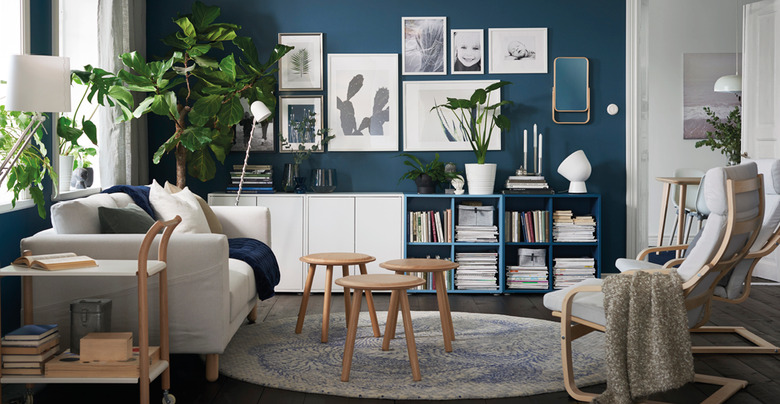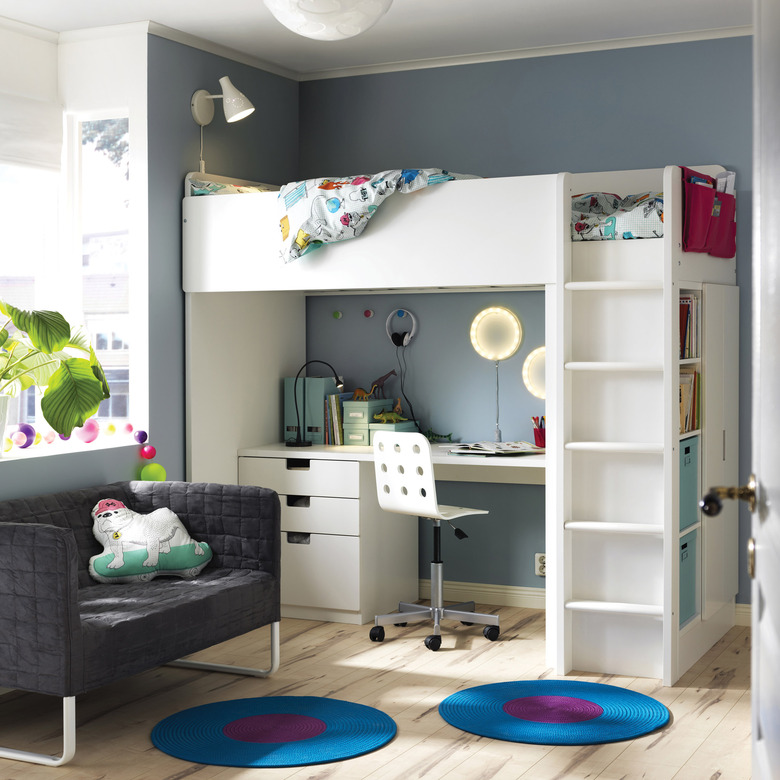Where Is Ikea Furniture Manufactured?
IKEA is the world's largest furniture retailer, but it doesn't manufacture the furniture it sells. While most of the IKEA products are designed in Sweden, much of the actual manufacturing takes place in China and in developing countries such as Vietnam, Malaysia and Myanmar, and also in Eastern European countries such as Romania and Poland. In all, something like 1,350 vendors in 52 countries are responsible for supplying IKEA's Swedish-style furniture.
Inventive From the Start
Inventive From the Start
IKEA's furniture business had its beginnings in the late 1940s when Ingvar Kamprad, the company's founder and already a youthful entrepreneur, began selling via mail order the furniture produced by local manufacturers. As his business grew, Kamprad was able to supplant local advertising and word of mouth with a catalogue of furniture products. While still operating as a mail-order business, in 1953 IKEA opened its first furniture showroom. Customers could see for themselves the quality and value before ordering. In 1956, IKEA began designing its own exclusive furniture products and in that decision lies the difference that sets IKEA apart from other low-cost furniture retailers.
Rather than scouring the world in search of suitably economical products to sell, IKEA begins with design specifications and a price objective and then solicits solutions from manufacturers who can meet those specifications and that objective. Given IKEA's worldwide market, the incentive is powerful and often leads to innovative new manufacturing processes and effective uses of materials. IKEA's constant expansion into new markets and the ever-evolving economies of the countries where IKEA seeks to source its products mean that the particulars of what gets manufactured and where it gets made is continuously changing.
Striving for Sustainability
Striving for Sustainability
Labor costs are a factor, of course, but so is assured access to a reliable supply of raw materials, especially wood and wood products. IKEA is the third largest consumer of wood in the world. With an eye toward the future and an acknowledgment of the heavy demand on wood resources that IKEA furniture production entails, IKEA Holding has acquired a 25,000-acre forest in Lowndes County, Alabama. The Alabama forest will be managed by Portland, Oregon- based Campbell Global, a leader in sustainable timberland investment.
Responsible, sustainable maintenance of wood resources has long been a concern and an objective of IKEA management. Verifiable origins for lumber is problematic when the wood passes through multiple brokers and in developing countries local enforcement of illegal timber harvesting can be lax or nonexistent. IKEA Group also owns more than 250,000 acres of forest land in Romania and the Baltic States. By owning and managing its own forests, IKEA can optimize their long-term health and productivity while assuring the sustainable provenance of its timber supply.
IKEA's empire of more than 350 stores spread over 41 countries means that shipping expense features prominently in cost considerations. That's why distributing the manufacturing across the globe makes sense, even the production of some furniture in North America, where the labor costs are higher but wood is plentiful and proximity to key markets is advantageous.

